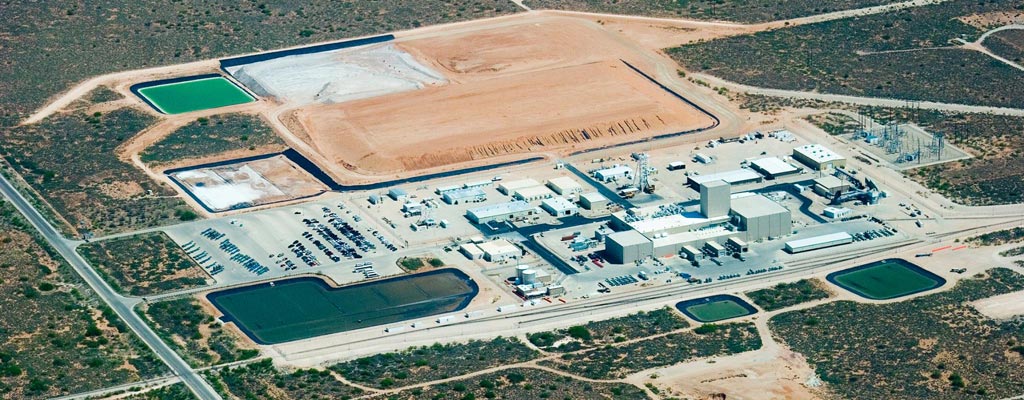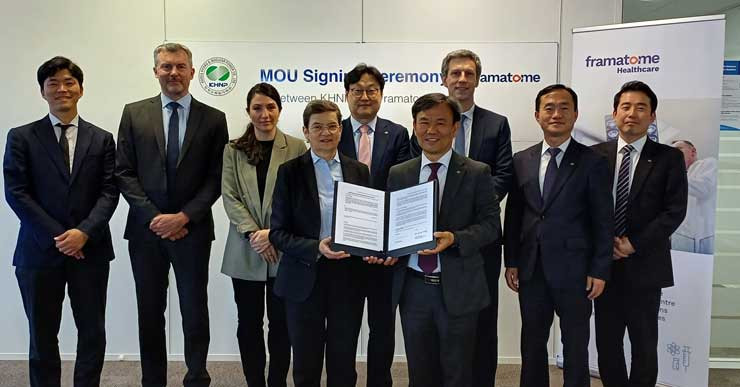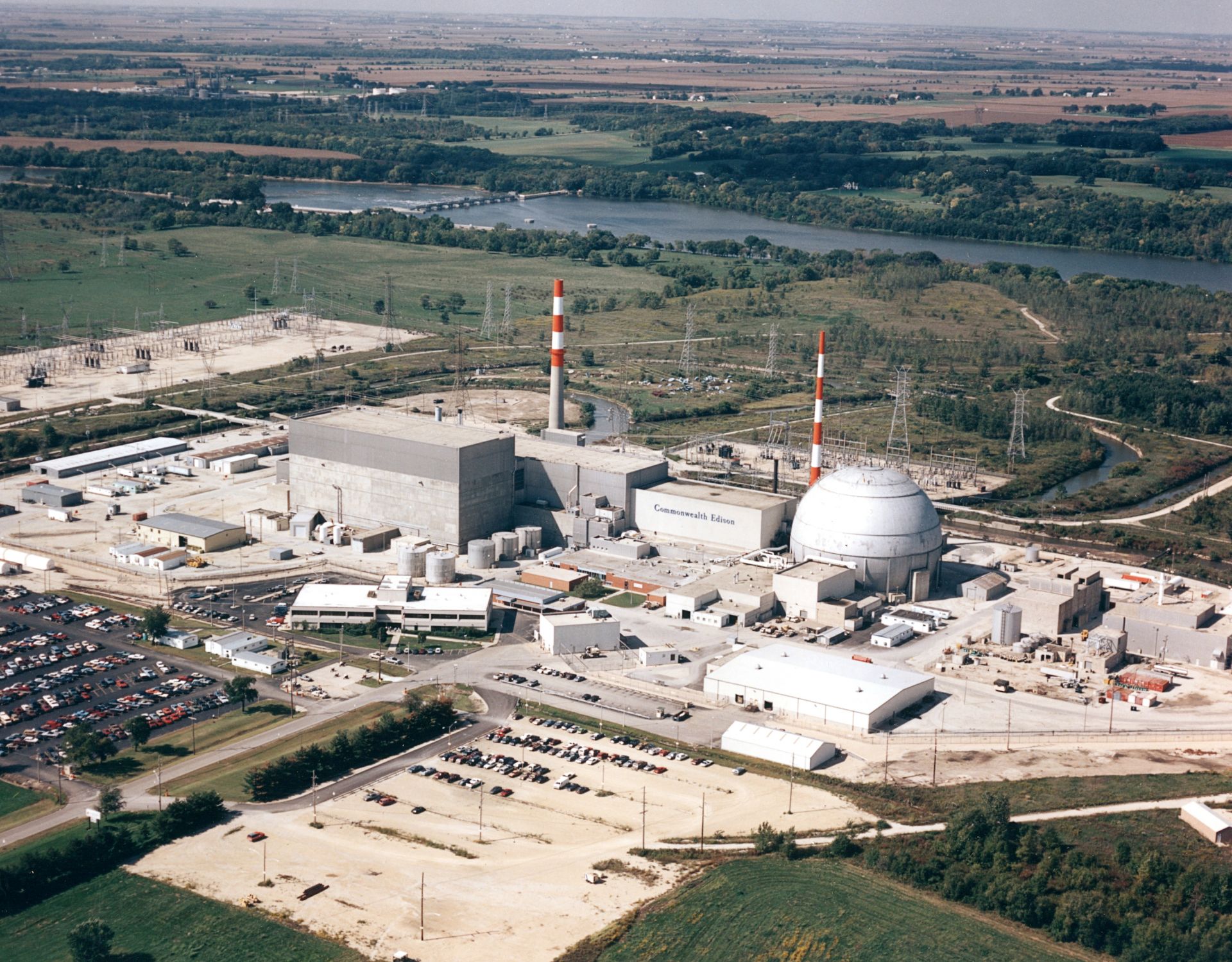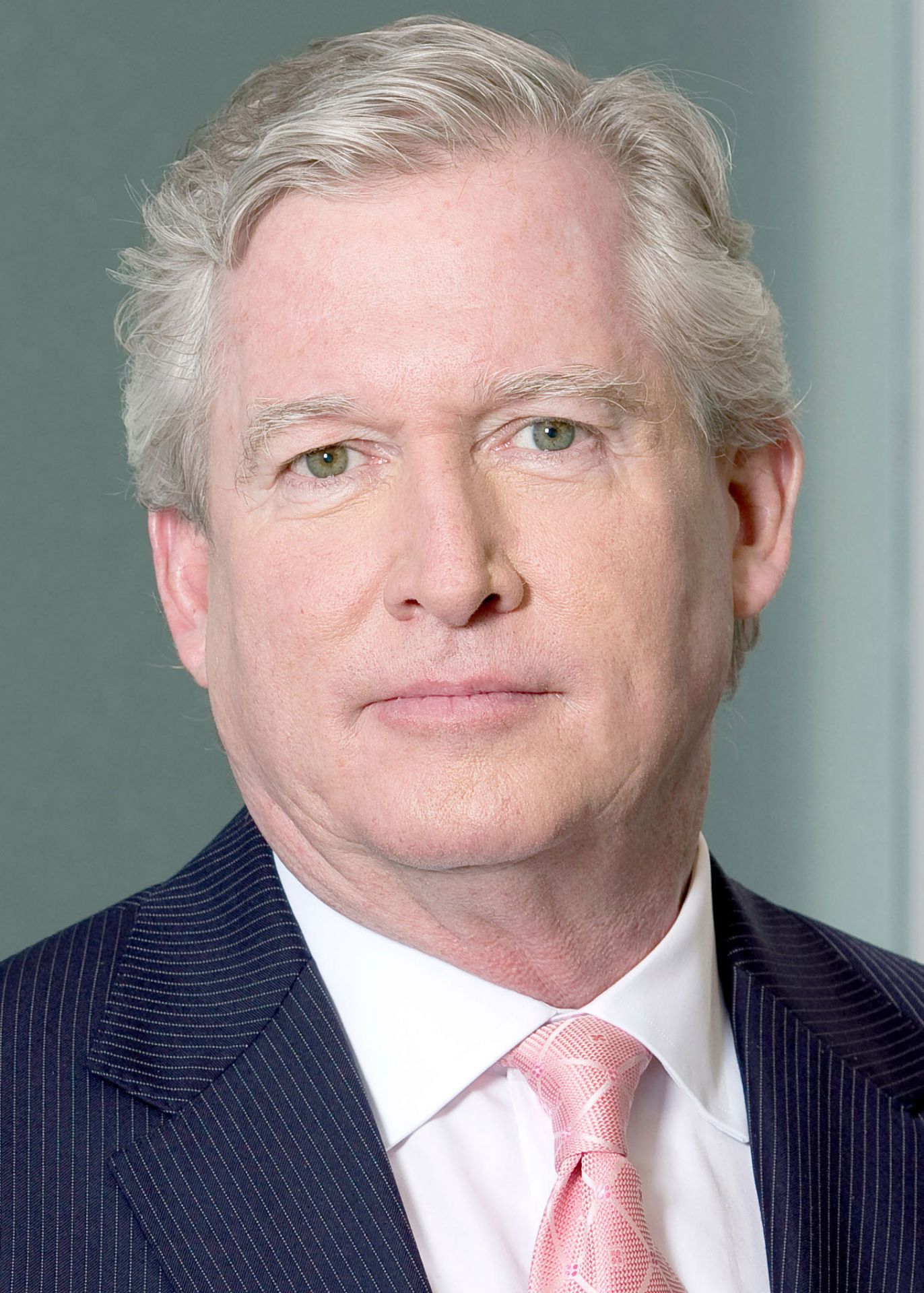Bulgarian prime minister Dimitar Glavchev, left, and acting energy minister Vladimir Malinov visited Kozloduy nuclear power plant, where Westinghouse is lined up to build two new reactors. (Photo: gov.bg)
Bulgarian officials have approved the transition to Westinghouse fuel at the nation's Kozloduy nuclear power plant, as Bulgaria moves away from its reliance on Russian supplies. The fuel was recently delivered for use in Unit 5.
The Waste Isolation Pilot Plant. (Photo: DOE)
SDU 9 is the latest megavolume disposal unit completed at SRS. (Photo: DOE)
The Waste Isolation Pilot Plant, near Carlsbad, N.M. (Photo: DOE)
The Department of Energy’s Office of Environmental Management has issued a request for qualifications for interested parties and prospective offerors looking to enter into a realty agreement for carbon-pollution-free electricity (CFE) projects at the department’s Waste Isolation Pilot Plant site in southeastern New Mexico.
Investment banking on higher demand for SMR and large nuclear reactors
BWX Technologies announced today plans to expand and add advanced manufacturing equipment to its manufacturing plant in Cambridge, Ontario, Canada.
A $36.3 million USD ($50M CAD) expansion will increase the plant’s size by 25 percent—to 280,000 square feet—and another $21.7 million USD ($30M CAD) will be spent on new equipment to increase and accelerate its output of large nuclear components. The investment will increase capacity and create more than 200 long-term jobs for skilled workers, engineers, and support staff, according to the company.
Catherine Cornand of Framatome and Chang Hee-Seung of KHNP (center) with Framatome and KHNP employees following the signing of the MOU. (Photo: Framatome)
Framatome and Korea Hydro & Nuclear Power (KHNP) have announced the signing of a memorandum of understanding to explore the possibility of producing the medical isotope lutetium-177 at KHNP’s Wolsong nuclear power plant in South Korea. The companies also will investigate the feasibility of using the plant to support Korean production of medical radioisotopes in the future.
A computer-generated rendering of the Sizewell site on the Suffolk coast. Sizewell A and B are to the left and center (respectively) in this image; the section to the right is the Sizewell C area. (Image: EDF Energy)
French nuclear developer Framatome is slated to deliver key equipment for Sizewell C Ltd.’s two large reactors planned for the United Kingdom’s Suffolk coast.
The agreement, reportedly worth multiple billions of euros, was announced this week and will involve Framatome from the design phase until commissioning. The company also agreed to a long-term fuel supply deal. Framatome is 80.5 percent owned by France’s EDF and 19.5 percent owned by Mitsubishi Heavy Industries.
Dresden nuclear power plant. (Photo: Constellation Energy)
Constellation Energy has filed with the Nuclear Regulatory Commission for a subsequent license renewal for its Dresden nuclear power plant in Illinois. The extension would allow Dresden to run through 2051.
The filing begins a comprehensive, multiyear review by the NRC. Unit 2 is currently licensed to operate through 2029 and Unit 3 through 2031. The facility’s license was first renewed by the NRC in 2004.
An artistic representation of a Desulfosporosinus cell with immobilized uranium on the surface. (Image: B. Schröder/HZDR)
Researchers at the Helmholtz-Zentrum Dresden-Rossendorf (HZDR) research laboratory in Germany have investigated a microorganism capable of transforming water-soluble hexavalent uranium [U(VI)] to the less-mobile tetravalent uranium [U(IV)]. The researchers found that the sulfate-reducing bacterium Desulfosporosinus hippei, a relative of naturally occurring microorganisms present in clay rock and bentonite, showed a relatively fast removal of uranium from clay pore water.


 For American Nuclear Society members and Nuclear News subscribers, the 2024 Buyers Guide is now available in the
For American Nuclear Society members and Nuclear News subscribers, the 2024 Buyers Guide is now available in the 










